Cheese is undoubtedly one of the most well-loved food products in the market, due to its variety of flavors and its nutrient content. While there’s no doubt that all types of cheese boast some impressive health benefits, some types can offer much more, and cottage cheese is one of them.
What Is Cottage Cheese?
Cottage cheese, or Dutch cheese, is a fresh, soft cheese made from skimmed milk. It has been around for thousands of years, with the earliest documentation being in 1831. The term “cottage cheese” was a result of this type of cheese initially being produced in cottages from milk left over from making butter.
Because of the differences in curd sizes and moisture levels, different types of cottage cheese exist. Dry cottage cheese refers to the rinsed curds, which give it its sweet flavor. This type is a good choice for people who can’t tolerate lactose, as the lactose content of the cheese gets broken down during fermentation. In contrast, wet cottage cheese refers to the mixture of the curds with a cream dressing, resulting in a richer variant.
To determine the quality of the cottage cheese you have, you should check its flavor, consistency and curd size. Cottage cheese should have a clean, creamy flavor and appearance. It should also have a soft texture — it shouldn’t be too pasty or too firm — and the pieces of curd should be approximately the same size.
Health Benefits of Cottage Cheese
Cottage cheese is one of the most nutritious foods available, as long as you can ensure that you purchase high-quality products. Together with the nutritional components of milk, cottage cheese also contains probiotic components because of the fermentation process it undergoes. These probiotics have been proven to be extremely beneficial for human health. Some of the health benefits that you can get from cottage cheese include:
- Helps maintain bone health— Like other dairy products, cottage cheese is rich in calcium, which is an important component for bone health. Maintaining optimal levels of calcium in the body may lower your risk of age-related bone degeneration or osteoporosis.
- Lowers the risk for metabolic syndrome— In a 2006 study from the Journal of Epidemiology and Community Health, it was found that dairy consumption helps lower the prevalence of metabolic syndrome. Metabolic syndrome has been linked to a higher risk for diabetes and heart disease.
- May assist in weight management— A 2011 study in The Journal of Nutrition shows that dairy food consumption may help facilitate weight loss in obese, premenopausal women. In conjunction with diet and exercise, high dairy intake provided a good foundation for fat loss and lean mass gain.
- May help improve gut health— Fermented foods are packed with probiotics that help promote a healthy gut microbiome. However, there are certain types of cottage cheese that do not contain probiotics. If you’d like to get this benefit from cottage cheese, look for labels that clearly confirm live probiotics content and make sure that the cheese you’ll be consuming is of the highest quality.
Note that you also have the option to make your own probiotic cottage cheese. You can find the recipe for this in the section below.
Cottage Cheese Nutrition Facts
As mentioned above, cottage cheese contains numerous nutrients that you can undoubtedly benefit from. However, the amounts usually vary depending on the quality and source of the cottage cheese you’ll be consuming. For the approximate amounts, refer to this USDA report of cottage cheese’s nutrition:
| Cottage Cheese Nutritional Facts
Serving Size: 100 grams, Cheese, cottage, creamed, large or small curd |
||
| Amt. Per Serving |
||
| Energy | 98 | |
| Protein | 11.12 g | |
| Total lipid (fat) | 4.3 g | |
| Carbohydrate, by difference | 3.38 g | |
| Fiber, total dietary | 0 g | |
| Sugars, total | 2.67 g | |
| Calcium, Ca | 83 mg | |
| Iron, Fe | 0.07 mg | |
| Sodium, Na | 364 mg | |
| Vitamin C, total ascorbic acid | 0 mg | |
| Vitamin A, IU | 37 IU | |
| Fatty acids, total trans | 1.718 g | |
| Cholesterol | 17 mg | |
Studies Done on Cottage Cheese
Cottage cheese and other dairy products are packed with essential nutrients, making them a primary focus of numerous scientific studies. One of the components discussed in studies is their effect on bone health.
In a 2013 study from the journal Nutrients, consumption of dairy products such as milk, yogurt and cheese during childhood and adolescence was found to have an impact in maintaining women’s bone mineral density (BMD) later in life. The researchers noted that while calcium intake during adulthood is necessary for preserving bone health, dairy consumption during the earlier stages of life still plays a key role in decreasing the risk for osteoporosis by keeping risk factors from setting in.
In a 2007 study from the Journal of Epidemiology and Community Health, dairy products were linked to lowered risk for metabolic syndrome in men. Of the 2,375 participants in the study, the prevalence of metabolic syndrome was only at 15%.
A 2014 study also claims that intake of dairy products like cottage cheese (and other cheeses), milk and yogurt may lower the risk of cardiovascular diseases. While the study was not conclusive on dairy’s direct effect on disease susceptibility, it points to the possible protective characteristics of dairy when it comes to cardiovascular health.
Choose Whole-Fat Cottage Cheese Over Low-Fat
There are two variations of cottage cheese sold on the market today, which differ based on their fat content: whole-fat cottage cheese and low-fat cottage cheese. While both are considered healthy variants, whole fat undoubtedly trumps the latter in both nutrient content and safety concerns.
For years, full-fat dairy has been wrongly stigmatized as an unhealthy option because of the high saturated fat content. However, numerous scientific studies have found that the fats present in whole-fat dairy may actually help combat heart conditions and other cardiovascular diseases. In a 2018 study in The American Journal of Clinical Nutrition, researchers noted that the increased dairy fatty acids circulating in the body were not associated to cardiovascular disease and stroke mortality.
In addition, a 2013 study in the European Journal of Nutrition showed that high-fat dairy consumption was inversely associated with a risk of obesity. The same conclusion was reached by another 2013 study from the Scandinavian Journal and Primary Health Care, with researchers noting that high intake of dairy fat may help lower the risk of central obesity.
Another note is the possibility that low-fat cottage cheese may contain carrageenan, an additive from red seaweed used as a thickening agent in numerous dairy products. While the USDA approves of carrageenan use in organic products, this does not mean that this additive is healthy and safe. In fact, carrageenan is linked to inflammation, increased stomach ulceration and a heightened risk of cancer.
How to Make Cottage Cheese
While the convenience of supermarket-bought cottage cheese may be tempting, there’s no way that you can ensure that you’re getting your money’s worth in terms of quality. If you’re trying to control the quality of the ingredients in your cottage cheese, there’s the option of making your own from scratch. This way, you can also ensure that your cottage cheese contains the same probiotic content that some of the commercially made products claim to have.
Here is the recipe for probiotic cottage cheese from The Healthy Home Economist:
Probiotic Perfect Cottage Cheese
| Ingredients: | ||
| 2 quarts raw grass fed milk | 1 cup plain raw kefir | 1/2 teaspoon sea salt |
Procedures:
- Pour the milk into a large mixing bowl. Cover the bowl with a plate and leave it in the refrigerator until all the cream rises to the top. This might take up to 24 hours.
- Skim off the cream with a spoon. Save it in a pint-sized glass Mason jar or similar container in the refrigerator.
- Mix the kefir or yogurt into the milk with a spoon. Cover the bowl with a plate once more and leave on the counter at room temperature, until the milk thickens like yogurt. This is what is called the curd and it will take one to two days to thicken, depending on the temperature and milk’s freshness.
- Using a knife, cut the curd in the bowl into tiny squares, no bigger than 1/4- to 1/2-inch. Slice it through it from top to bottom and left to right.
- Fill a medium-sized pot with water about 1 inch deep. Put the pot on the stovetop on low heat. Place the bowl of curds with the plate removed on top.
- Using a candy thermometer, test the curd’s temperature every five minutes. Stir the curd a few times every five-minute mark. Repeat this process for about 30 minutes until the curds reach a temperature of 110 degrees Fahrenheit. Be careful not to exceed this temperature mark to make sure that the probiotics stay intact.
- Remove the bowl from the heat once you reach the desired temperature.
- Using a strainer, separate the curds from the whey.
- Rinse the curds with cold filtered water. Gently stir the curds with a spoon until all the water is drained out.
- Put the curds in a container and mix with sea salt and cream.
Substitutes for Cottage Cheese
If for some reason you can’t get your hands on some cottage cheese, there are numerous alternatives that can be used in its place. However, you should expect a slight change in texture and flavor of the overall dish. Three of the substitutes you can go for are:
- Ricotta cheese— Ricotta cheese is a common alternative for cottage cheese because of their similar appearance and texture.
- Sour cream— Sour cream has the same consistency as blended cottage cheese, but with a more sour flavor. If you’re planning to substitute with sour cream, make sure to omit lemon juice if the recipe asks for it.
- Fromage blanc— This is a white cheese with similar consistency as thick sour cream, though it’s a more expensive option.
What’s the Difference Between Ricotta and Cottage Cheese?
As mentioned, ricotta cheese and cottage cheese have similarities in both taste and appearance, which is why they are usually interchanged. The difference between the two is how they are produced. Ricotta cheese is made with leftover whey from the production of other hard cheeses, while cottage cheese is made with the curds.
These two cheeses also differ in texture and moisture. Ricotta cheese has a distinct fine and grainy texture, while cottage cheese is lumpier. Because of these differences in consistency, recipes that require the specific cheese may end up with a different taste or texture.
Both types of cheeses bring different health benefits to the table, making them both deserving additions to your meals. However, it’s important to note that while both cheeses are nutritionally beneficial, it all boils down to their quality. Make sure that you get your supply from trustworthy sources, such as farmers markets where you can clearly connect with the producers. Better yet, make your own cheese at home so that you have complete control over the ingredients you’ll be using.
Frequently Asked Questions (FAQs) About Cottage Cheese
Q: Can you freeze cottage cheese?
A: While cottage cheese may be frozen, it is not recommended. When thawed, frozen cottage cheese may become watery and grainy, which may alter the consistency and texture of the dish you’ll be preparing.
Q: Is cottage cheese good for dogs?
A: When feeding cheese to dogs, the issue of lactose intolerance may surface as some dogs might present adverse reactions to dairy. The good news is that cottage cheese contains little lactose and a lot of calcium, phosphorus and protein, making it a good addition to your dog’s diet. However, make sure that you don’t feed them too much as excessive amounts of cottage cheese may cause stomach upset.
Q: How do you eat cottage cheese?
A: Cottage cheese may be added to numerous dishes, either as a topping or as a dip, or as a replacement for other dairy ingredients. Some of the ways that cottage cheese is eaten include:
- As a topping for stuffed potatoes
- Layered with fruits and nuts to make a healthy parfait
- Served it with grilled vegetables
Q: What does cottage cheese taste like?
A: The taste and aroma of cottage cheese can largely vary, although it usually has a creamy and mildly salty flavor. The level of sweetness also differs depending on the type, with wet cottage cheese having a richer and sweeter taste.
Q: Is cottage cheese keto?
A: While cottage cheese contains some carbohydrates, it can still be added to the ketogenic diet. The high protein and fat content in cottage cheese make it a good addition to your ketogenic meal plan.
Q: Does cottage cheese contain probiotics?
A: If you’re planning on optimizing your gut health, cottage cheese would be a good choice for you. A lot of the products in the market actually offer live and active cultures. Just make sure that you get your cottage cheese from a trustworthy manufacturer or that you make it yourself at home.
Q: Is cottage cheese low-carb?
A: Like other cheeses, cottage cheese is low in carbohydrates, with only 3.38 grams of carbohydrates per 100 grams serving. This makes it a good choice for people who are trying to limit their carbohydrate intake.

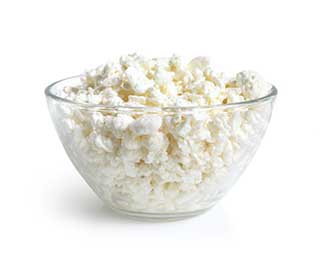
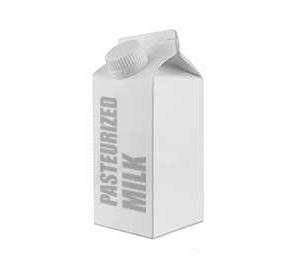
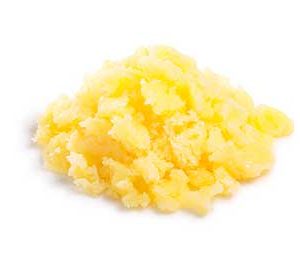
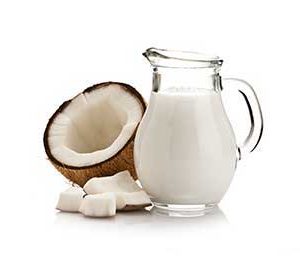
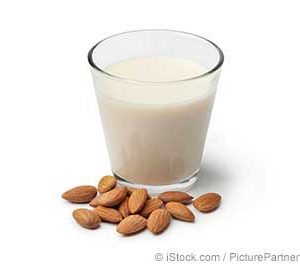
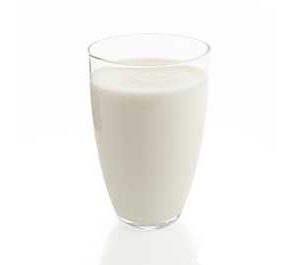
Reviews
There are no reviews yet.